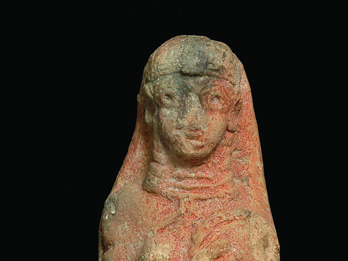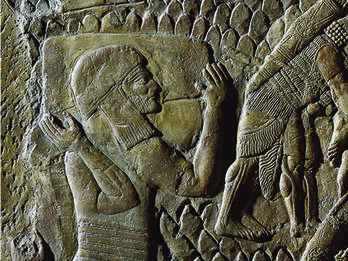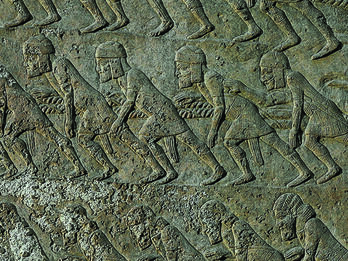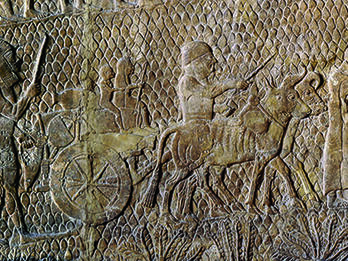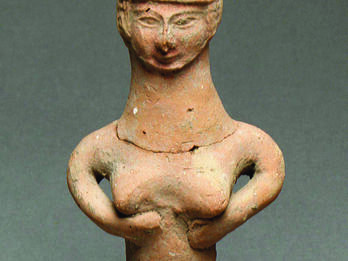Showing Results 1 - 6 of 6
Restricted
Image
There are numerous terra-cotta plaque figurines of females, some naked and others clothed, holding disks, mostly from northern Israel and Transjordan. Many come from border towns and towns whose…
Places:
Hazor, Land of Israel (Tel Hazor, Israel)
Date:
Iron Age II, 9th–8th Century BCE
Categories:
Restricted
Image
This detail appears in a relief from the palace of Sennacherib, king of Assyria (r. 705–681 BCE), in Nineveh depicting the Assyrian conquest of Lachish in 701 BCE. (For the full relief, see "Conquest…
Places:
Nineveh, Assyria (Mosul, Iraq)
Date:
ca. 701 BCE
Subjects:
Categories:
Restricted
Image
This relief from Sennacherib’s palace shows workers rebuilding Nineveh, harnessed by shoulder straps to ropes by which they haul a large bull colossus toward the palace. Workers from various places…
Places:
Nineveh, Assyria (Mosul, Iraq)
Date:
Early 7th Century BCE
Subjects:
Categories:
Restricted
Image
This section of the relief from the palace of Sennacherib, king of Assyria (reigned 705–681 BCE), in Nineveh depicting his conquest of Lachish in 701 BCE, shows Judahite inhabitants filing out of the…
Places:
Nineveh, Assyria (Mosul, Iraq)
Date:
ca. 701 BCE
Subjects:
Categories:
Public Access
Image
Terra-cotta pillar figurines are found throughout the biblical territory of Judah and date to the eighth to seventh centuries BCE. Most were decorated with a white background layer and one or more…
Places:
Lachish, Land of Israel (Tel Lakhish, Israel)
Date:
Iron Age IIB–IIC, 8th–7th Century BCE
Subjects:
Categories:
Restricted
Image
The six men from Lachish in this section of Sennacherib's palace relief are dressed quite differently from the men shown in other sections. They are clad in the simplest of short-sleeved, unbelted…
Places:
Nineveh, Assyria (Mosul, Iraq)
Date:
ca. 701 BCE


